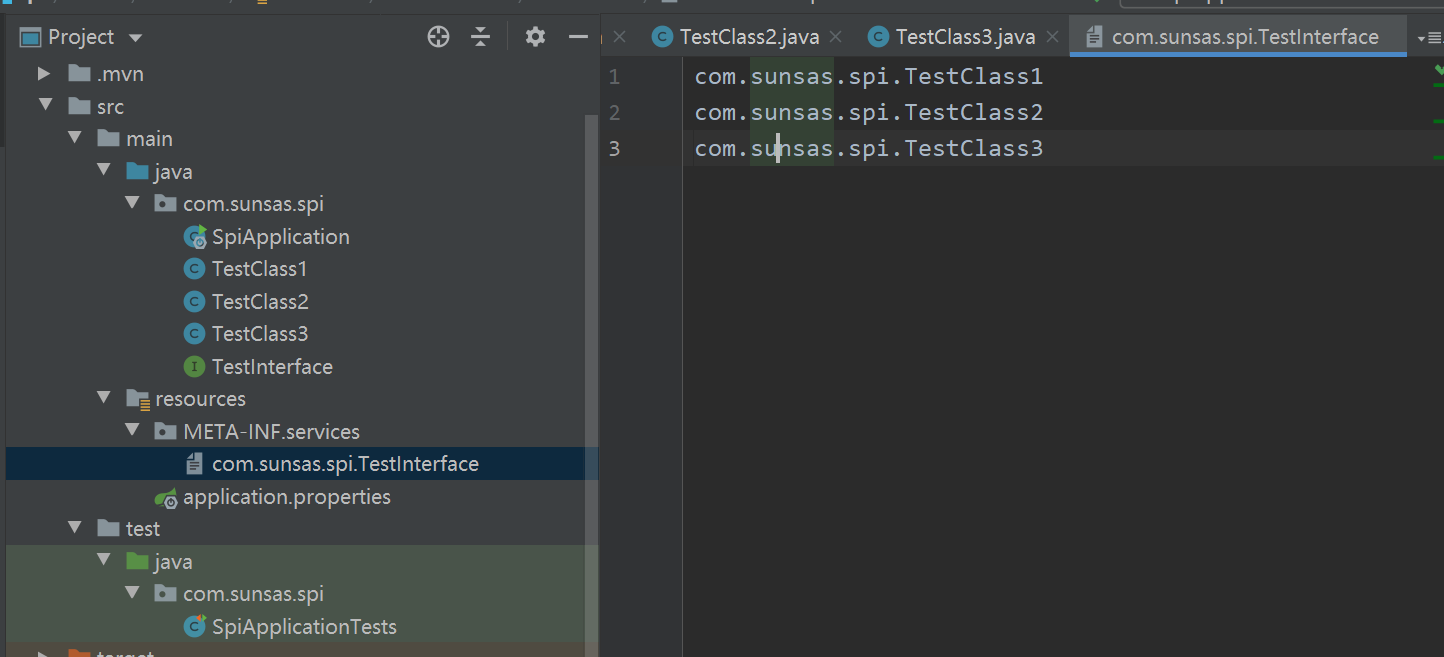其实就是别人提供了一个类,读取指定目录下的文件,通过反射方式创建对象。
为什么来说spi?因为spring boot就是通过spi来创建对象的。
首先写一个接口:
public interface TestInterface { void test(); }
写几个实现类:
public class TestClass1 implements TestInterface { @Override public void test() { System.out.println("TestClass1"); } public TestClass1(){ System.out.println("构造器:TestClass1"); } }
public class TestClass2 implements TestInterface { @Override public void test() { System.out.println("TestClass2"); } public TestClass2(){ System.out.println("构造器:TestClass2"); } }
public class TestClass3 implements TestInterface { @Override public void test() { System.out.println("TestClass3"); } public TestClass3(){ System.out.println("构造器:TestClass3"); } }
要使用spi,必须遵守其规范,要求在根目录下新建META-INF/services,
新建文件,文件名与接口全类名一致,这里为com.sunsas.spi.TestInterface
内容为其实现类全类名:
com.sunsas.spi.TestClass1
com.sunsas.spi.TestClass2
com.sunsas.spi.TestClass3

编写测试类:
import org.junit.jupiter.api.Test; import org.springframework.boot.test.context.SpringBootTest; import sun.misc.Service; import java.util.Iterator; import java.util.ServiceLoader; @SpringBootTest class SpiApplicationTests { @Test void test() { ServiceLoader<TestInterface> load = ServiceLoader.load(TestInterface.class); Iterator<TestInterface> iterator = load.iterator(); while(iterator.hasNext()){ TestInterface next = iterator.next(); next.test(); } System.out.println("----------------------------------"); // 下面这种方式也可以 Iterator<TestInterface> providers = Service.providers(TestInterface.class); while(providers.hasNext()){ TestInterface next = providers.next(); next.test(); } } }
两者输出结果一致:
构造器:TestClass1
TestClass1
构造器:TestClass2
TestClass2
构造器:TestClass3
TestClass3